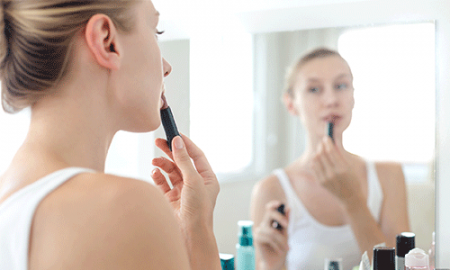With oily skin, make-up is for better or for worse…For better, it's when make-up is chosen carefully, not used in excessive amounts, tones down shine and camouflages pores. For worse, it's when too many layers of make-up are used: primer + base + high coverage foundation + powder and more powder, all in highly compact versions that suffocate the skin. Your face no longer looks remotely natural and as far as radiance is concerned, forget it! People with combination to oily skin tend to rely entirely on foundation and tracking down every last little shiny patch. And if you have combination skin, you also have to deal with different levels of brightness and reaction in the various different areas of your face.
• A perfect complexion for oily skin
First and foremost, make sure you use a good make-up base. Otherwise, your foundation won’t last all day. Ideally, find a moisturising cream for oily skin that will smooth and mattify your skin. Next, a liquid, oil-free, non-comedogenic foundation, applied in little dabs, just where it's needed, without creating any thick patches. Finish with some light, loose powder just on your nose, leaving the cheeks or the corners of the eyelids natural, for a more radiant effect. This is a great tip for days when your complexion looks dull.
• A perfect complexion for combination skin
Once again, the base is what counts, so use a transparent, moisturising, unifying product. Next, people with combination skin can choose between a BB Cream - a tinted cream, if there are no very visible blemishes or a mineral foundation. Add an optional touch of loose powder on the nose.












